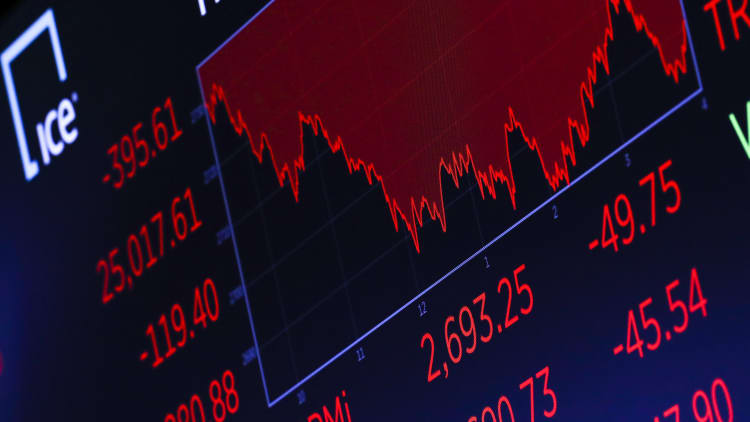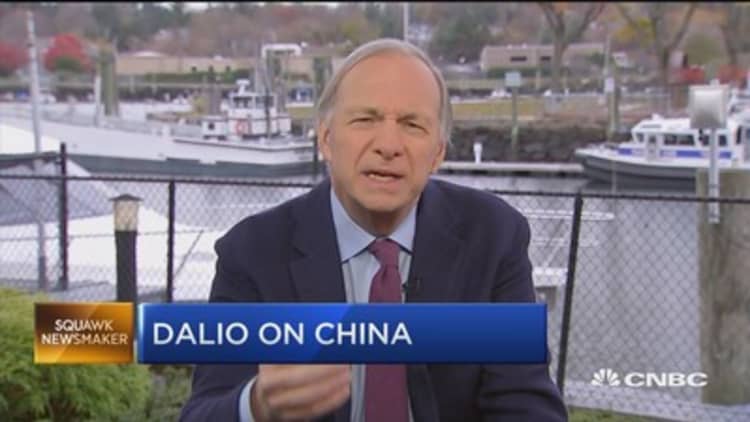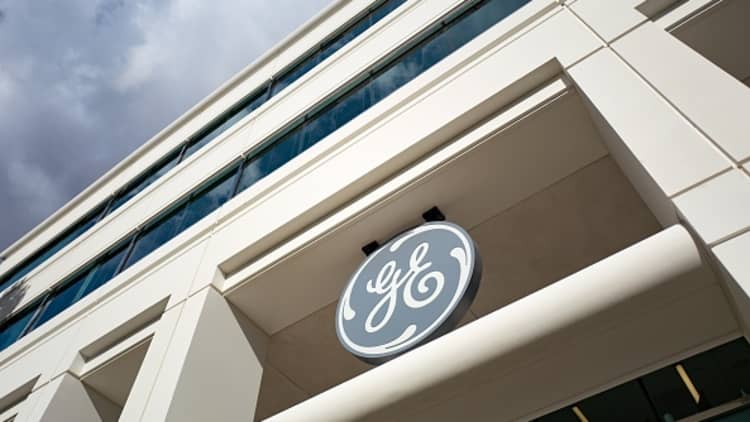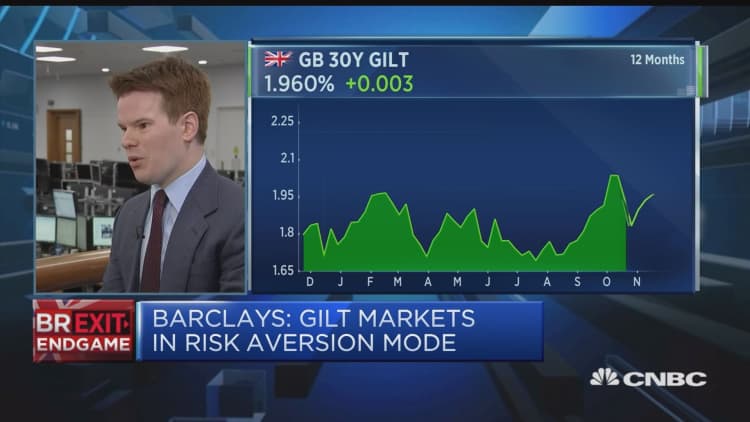At first glance, it looks like a $9 trillion time bomb is ready to detonate, a corporate debt load that has escalated thanks to easy borrowing terms and a seemingly endless thirst from investors.
On Wall Street, though, hopes are fairly high that it's a manageable problem, at least for the next year or two.
The resolution is critical for financial markets under fire. Stocks are floundering, credit spreads are blowing out and concern is building that a combination of higher interest rates on all that debt will begin to weigh meaningfully on corporate profit margins.
"There is angst in the marketplace. It's not misplaced at all," said Michael Temple, director of credit research at asset manager Amundi Pioneer. "But are we at that moment where this thing blows sky high? I would think that we're not there yet. That's not to say that we don't get there at some point over the next 12 to 18 months as rates continue to move higher."

Essentially, the situation can break in two ways: a good-news case where companies can manage their debt as the economy stabilizes and interest rates stay in check, and the other where the economy decelerates, rates keep heading up and it's no longer so easy to keep rolling that debt over.
There's one worrying trend where companies on the edge of the investment-grade universe lose their standing and turn into high-yield or junk, sending rates — and defaults — significantly higher. And there's a more positive case where the U.S. continues to outperform the rest of the world and corporate debt problems are limited to overseas and specific companies that aren't systemically important.

"The answer hinges on how long we have until the credit cycle turns, how long we have until interest rates have gotten to the point where they start to snuff out economic activity," Temple said. "If we were of the opinion that interest rates are already too high for the economy to stand and the recession was going to happen sometime next year, then I would say we've got a real big problem here."
As things stand, though, he thinks conditions are still favorable for the corporate credit market.
"In our view, economic activity will probably moderate next year, but at a very high level," he said. "That's not enough to cause the chaos that I just described."
Nearly doubling the debt
Over the past decade, companies have taken advantage of low rates both to grow their businesses and reward shareholders.
Total corporate debt has swelled from nearly $4.9 trillion in 2007 as the Great Recession was just starting to break out to nearly $9.1 trillion halfway through 2018, quietly surging 86 percent, according to Securities Industry and Financial Markets Association data. Other than a few hiccups and some fairly substantial turbulence in the energy sector in late-2015 and 2016, the market has performed well.
In fact, Fitch Ratings forecasts bond defaults for 2019 at the lowest since 2013, with leveraged loans at the lowest since 2011.
Such high debt levels are "certainly something to take notice of," said Eric Rosenthal, Fitch's senior director of U.S. leveraged finance. "In terms of the systemic risk, at the moment it's not there."
One reason markets worry about debt is that there's not as much cash around to cover it. The cash-to-debt ratio for corporate borrowers fell to 12 percent in 2017, the lowest ever.

Still, there's reason for optimism.
Fitch estimates that new investment grade issuance was $531 billion through the third quarter, a more than 15 percent drop from the same period a year ago. High-yield issuance also has declined to $138 billion, a 32 percent drop from 2017.
The 2017 tax breaks also appear to be helping. Companies saw their nominal tax rates reduced from 35 percent to 21 percent and apparently are using a large chunk of the windfall to knock off some debt.
Since the tax cut took effect, the top 100 corporate nonfinancial companies have spent $72 billion of new cash flows to debt payments, a bit behind the $81 billion that went to shareholder returns through buybacks and dividends, according to Moody's Investors Service.
"Companies are spending a much larger percentage of incremental dollars on debt reduction," the ratings agency said in a report. "What we see when we look at the annual net borrowing activity is a big swing from issuers changing from a net borrower each year pre-tax overhaul to a net-payer of debt post-tax overhaul."
Investors still willing to buy
For the debt that is issued, investor demand remains strong if beginning to wane a bit.
One measure of how willingly the market is snapping up bonds, particularly those lower in quality, is through covenant quality, or the amount of protections being demanded in case of default. Moody's reports that its Covenant Quality Indicator has held at its lowest level of classification for 18 straight months and is just off the record set in August 2015.
At the same time, that could be a trouble sign as balance sheet strength becomes more important.
"The high-yield sector, every way we look at it, just seems pretty overvalued and not worth the amount of risk that you're taking," said George Rusnak, co-head of global fixed income for the Wells Fargo Investment Institute. "What we're seeing now is some spreads widening, which will be more impactful on high yield. We could see triple-B credits, some of them, move from investment grade to high yield."
That slide from low investment grade to junk is one of things that scares markets. General Electric is the highest-profile case to have that potential, though company officials insist they are doing everything they can to make sure that doesn't happen.

Should a company that big slide, it would reshape the high-yield market. Investors would be counted on to snap up those bonds, but could demand even higher yields to do so.
"It sets up for a liquidity trap. You get an underappreciated risk that becomes a catalyst," Rusnak said. "The second wave of buyers that are holding high yield realize they have more risk than they thought ... and it's kind of a downward spiral."
Well Fargo itself is retreating from the space, with a neutral position on investment grade corporates and an unfavorable outlook on high yield.
"There is a lot of leverage. You could argue they took what the market gave them, to take on the leverage at lower interest rates," Rusnak said. "The question is will they be able to sustain. In a lot of cases they will, but there will be some bubbling up of challenges."
The leveraged loan threat
One of those other challenges also comes from the leveraged loan market, a growth area that now tops high yield in total issuance with $1.3 trillion.
Sen. Elizabeth Warren spoke publicly about the threat in a recent public hearing, with the Massachusetts Democrat warning Randal Quarles, the Federal Reserve's vice chair of supervision for the banking industry, that leveraged loans pose an economic threat on scale with subprime loans from a decade ago.
"The Fed dropped the ball before the 2008 crisis by ignoring the risks in the subprime mortgage market," Warren said.
Simon Macadam, global economist at Capital Economics, also said leveraged loans, which generally are issued to lower-quality borrowers that already have a substantial debt load on their balance sheets, pose a danger.
"The main concern is a drop in lending standards," Macadam said in a note to clients. "In the US, the share of leveraged loans with no requirements for borrowers to meet regular financial tests, such as maximum leverage and minimum interest coverage ratios, has risen from around a quarter in 2007 to a record high of 80% today."

However, Macadam said that "for the time being" there are "at least three sources of comfort" for why the danger won't become systemic: "manageable" corporate debt loads, stronger bank capital, and an expected tempering of interest rate rises. Capital has an out-of-consensus forecast that the Fed will begin reducing rates into 2020 as the economy weakens.
Currently, the Fed is expected to approve a rate hike in December and has forecast three more in 2019.
Company by company
Indeed, fixed income strategists who spoke to CNBC were almost unanimous in their belief that problems with corporate debt will be far more company-specific than systemic.
"From a higher-level 30,000 feet, most U.S. corporates are in pretty good shape," said Yvette Klevan, portfolio manager for global fixed income at Lazard Asset Management. "The economy is still very strong. Tax reforms are beneficial. Looking into next year, overall debt servicing should be very stable and not problematic. We see a lot of opportunities in the market."
The current climate is likely more conducive to active management, or selecting individual issues, rather than following broad indexes, Klevan said. Passive taxable bond funds currently hold more than $1 trillion in total assets.
The current climate shows "how important it is to do your homework," she added. "From my perspective, it's key to have diversification."
Lazard has found value in "green bonds," which focus on companies that invest in environmentally sustainable ways.
That's not to say there isn't danger out there, but Klevan does not see it in a macro sense for the U.S.
"We all have to be very mindful of this buildup of debt everywhere, over the past especially five to seven years," she said. "Overall, and I say this probably from a sovereign standpoint, debt can be a tax on growth. So that's going to have a big impact in the medium term on a lot of countries."


